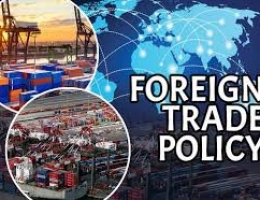
Trade Tensions to Slow Asia-Pacific Growth; India’s GDP to Ease to 6.4% in 2025
Economic growth in the Asia-Pacific region is projected to decelerate in 2025, driven by escalating trade tensions and evolving global economic trends. Forecasts indicate that India’s GDP expansion will slow to 6.4% in 2025, down from 6.6% in 2024, as external challenges dampen exports and overall economic activity.
Impact of Trade Tensions on Asia-Pacific Economies
Persistent trade disputes, particularly between the U.S. and China, continue to disrupt global markets. The introduction of new U.S. tariffs on Chinese imports is expected to further restrain China’s economy, with GDP growth projected to fall from 5% in 2024 to 4.2% in 2025 and 3.9% in 2026. Given China’s central role in regional trade and investment, this slowdown is expected to ripple across Asia-Pacific economies.
Additionally, tighter monetary policies in advanced economies and ongoing geopolitical uncertainties are straining supply chains and capital flows. As a result, countries like Japan, South Korea, and Australia are also likely to witness subdued growth in the coming years.
India’s Economic Outlook: Navigating Global Headwinds
India, a key driver of Asia’s economic expansion, is not immune to global disruptions. The forecasted moderation to 6.4% growth in 2025 is attributed to weaker global demand, supply chain bottlenecks, and inflationary pressures. Furthermore, evolving U.S. trade policies—such as new tariffs and protectionist measures—pose risks to India’s major export sectors, including textiles, pharmaceuticals, and IT services.
In response, Indian policymakers are emphasizing economic resilience through domestic-driven growth strategies. The Reserve Bank of India (RBI) has cut the repo rate by 25 basis points—its first reduction in nearly five years—to boost domestic consumption and investment amid global uncertainties.
Regional Adaptations and Future Prospects
Governments across the Asia-Pacific are recalibrating their economic policies to cushion the impact of trade disruptions. China is pivoting toward domestic consumption and technological self-sufficiency, while ASEAN nations are expanding trade partnerships to reduce reliance on major economies. Meanwhile, India is reinforcing its manufacturing and digital economy through policy reforms and public-private collaborations.
Despite short-term headwinds, the Asia-Pacific region remains a pivotal force in global growth. Strategic policy responses, trade diversification, and enhanced regional cooperation will be critical in mitigating the effects of ongoing trade tensions and sustaining long-term economic stability.











